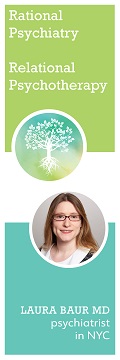I.
Consider:
It is our view that, among their other functions, the media serve and propagandize on behalf of the powerful societal interests that control…them. The representatives of these interests have important agendas and principles that they want to advance, and they are well-positioned to shape and constrain media policy. This is normally not accomplished by crude intervention, but by the selection of right-thinking personnel and by the editors’ and working journalists’ internalization of priorities and definitions of newsworthiness that conform to the institution’s policy.
[This includes] the ability to complain about the media’s treatment of news (that is, produce “flak”), to provide “experts” to confirm the official slant on the news, and to fix the basic principles and ideologies that are taken for granted by media personnel and the elite, but are often resisted by the general population. In our view, the same underlying power sources that own the media…that serve as primary definers of the news, and that produce flak and proper-thinking experts, also play a key role in fixing basic principles and dominant ideologies.
If I saw this quote on Facebook without attribution, I would assume it was from the latest far-right blog complaining about the liberal media. In fact, it is from Noam Chomsky and Edward Herman’s Manufacturing Consent, which claims that the media acts as lapdog of the dominant neoliberal ideology against leftists of all stripes.
I decided to read Manufacturing Consent because of this basic puzzle: how can both the Left and Right be so certain that the media is biased against them?
Now, in one sense this is not surprising. Everyone believes everything is biased against them. I’ve previously talked about bravery debates, the sort of argument where both sides believe that we’re brave non-conformist speaking truth to power, and they’re toadies of the elite repeating the dominant consensus like sheep. The hostile media effect is a well-known bias where both sides of an issue believe the media is biased against them, even going so far as to both give low fairness ratings to sample documentaries in controlled studies for opposite reasons. So a more general tendency of both sides to accuse the media as a whole of having a hostile agenda is pretty much what we would predict.
The part that surprises me is: I thought that, even objectively, apart from the bias to be expected on both sides, the Right’s case for a hostile media was pretty good. Democrats outnumber Republicans among journalists four to one, and CrowdPAC’s donation analysis rates journalism as among the most liberal professions. There’s an ongoing joke (and some informal analysis) about how disgraced Republicans’ party affiliation is lampshaded and disgraced Democrats’ party affiliation is covered up. And in my own area of interest, it often seems like scientific studies that support liberal beliefs tend to get front-page billing no matter how terrible they are, but scientific studies that cast doubt upon such beliefs them are very rarely mentioned.
And this perception seems to be mirrored by the popular wisdom, where conservatives complain of media bias full stop, and liberals mostly just gripe about Fox in particular.
So Chomsky and Herman’s claim that the media is in fact biased towards conservatives is startling and interesting and deserves a further look.
How exactly do Chomsky and Herman think this media bias works? In Chapter 1, they propose five major mechanisms:
1. The mass media is mostly controlled by large corporations, who therefore support the sorts of things large corporations would be likely to support, like unrestrained capitalism and privileges for the wealthy.
2. The mass media is dependent on advertising, which also involves large corporations who support the sorts of things large corporations are likely to support. Further, these advertisers may have specific interests. For example, Texaco might be less willing to advertise in a source that frequently critiques Big Oil or raises concerns about pollution.
3. Journalists are dependent on sources. The most convenient sources are large well-organized entities in the midst of newsworthy events who issue press releases. For example, by far the easiest source for the latest news about a foreign war is the Pentagon. Furthermore, the Pentagon, while not always in fact trustworthy, enjoys a presumption of trustworthiness; if you interview some random foreigner, you would want to fact-check her very carefully, but if you parrot the Pentagon press release, you are assumed to have done due diligence merely because the source is so official. Other such convenient and official sources of news include the White House, the Department of State, local police forces, and local chambers of commerce. But all of these are members of the establishment and so have a pro-establishment bias. Further, the news relies on “experts” to confirm and comment upon news, and because of incestuous relationships between government, corporations, think tanks, and academia, the most credentialed and salient experts will almost always be pro-establishment.
4. Conservative groups fund “flak machines”, organizations and individuals whose job it is to complain that the media is “biased” whenever they are insufficiently conservative. In these cases, relentless nitpickers will shriek about every slight inaccuracy and condemn the journalists involved as liars and unpatriotic to boot. If the media parrots the official line, then journalists can be almost arbitrarily sloppy and nobody will call them on it. Therefore, journalists who get ground down by the constant harassment will unconsciously shift towards more pro-establishment narratives.
5. Anti-communism is “the dominant religion” of “our cultural milieu” so any journalist who disagrees with the establishment can be smeared with the label “communist” and forced “on the defensive”. Most “have fully internalized the religion anyway, but they are all under great pressure to demonstrate their anti-communist credentials.”
These are interesting ideas, and if supported and developed further they would go a long way towards explaining how the media might have a strong conservative bias despite the liberal leanings of most journalists.
But just after proposing them, the book makes a sudden ninety degree turn to focus on a series of in-depth case studies of US military interference in Third World countries.
The case studies are there for a reason: after Chomsky and Herman establish what they consider to be the true story, they provide examples of the US media consistently misrepresenting even the simplest of facts in ways that flatter the United States government and unfairly malign its foreign enemies. These result in the US getting away with what can only be described as genocide with almost no criticism, even though the facts are plain for anyone to see.
So the idea of media bias hasn’t been exactly dropped. But these studies have disappointingly little relevance to the more general claims that I and presumably most people who bought this book were interested in. Military interference in Third World countries is a very specific subject, and one whose dynamics differ from stories closer to home.
Was I disappointed that the authors didn’t develop their original point about the media more? I was at first. Then I realized this was the book about obscure brutal Third World military conflicts that I’d never known I needed.
II.
Chomsky and Herman are both academics, and they’re both relentless. When they try to prove something, by golly, it stays proved. This is a good thing, in that the book deals with very controversial topics and anything less would be unconvincing. It’s also a bad thing, in that by the ninth or tenth long transcript taken from the same war crimes trial, all of the genocides and village-burnings and nun-rapes start to blend together into a big blob of atrocity, and you can’t remember whether Kouprasith Abhay was the evil generalissimo who launched the pro-US coup and killed thousands, or the good generalissimo who launched the anti-US counter-coup and killed thousands, or the morally ambiguous generalissimo who launched the non-aligned counter-counter-coup and killed thousands.
(his Wikipedia page clarifies that “[his] counter-coup within the counter-coup was ended by the paratroopers responsible for the ongoing coup.”)
But these details are less interesting than the big picture, a sketch of a political system that C&H jokingly term “death squad democracy”.
The general picture is of a third world country that was previously in a fragile social equilibrium. Something disrupts the equilibrium – usually the United States toppling the government because Communists were starting to do well in elections. It is replaced by a weak central government insecure in its power which decides to go after mass movements it perceives as a threat.
The mass movements form guerilla groups to resist government brutality. Supporters of the government form death squads in order to kill suspected guerillas more unethically than the international community would allow the government to do directly. Eventually there is so much violence that anyone who can form a guerilla army and kill their enemies before their enemies kill them does so.
The dictator solemnly declares that what’s going on is a rebellion by communist extremists with associated counter-violence by some grassroots rightist extremists, while he, the dictator, is doing his best to keep the peace. He send in the army, who are secretly or not-so-secretly are also the death squads, and so just make things worse. The United States declares the dictator is a great man who does his best to maintain peace in a troubled nation, and sends him tons of weapons and money. All of these weapons and money mysteriously end up in the hands of the death squads, which of course means the United States has to send in more weapons and money to help the dictator deal with the new threat of these richer, better-armed enemies.
If the dictator is feeling really nice, he will hold an election. The mass movements, communists, and anyone with actual popular support will be banned from participating since they are violent extremists, and the death squads will kill anybody who campaigns against the dictator. The dictator will win the vote handily, and the Free World will declare that since he won the elections, it’s clear that the communists are just violent extremists trying to deny the will of the people and take over for their own nefarious purposes.
This pattern, with slight variation, seems to have happened across the entire Third World at one point or another. Perhaps there will be another coup, and the dictator will be replaced by another dictator, perhaps some foreign country will get directly involved on one side or the other, but the basic logic will not change. For a space of years to decades, tens of thousands of people will be tortured and killed – a few here and there by the communists, but most by the government. Whole villages will be destroyed, freedom of thought will be nonexistent, and everyone except the dictator and a few cronies will be constantly living in fear.
And in a sense, I already knew all of this. We all kind of understand what goes on in banana republics. But for some reason, Manufacturing Consent painted an unusually clear picture that knocked it into relief for me and changed my understanding of a lot of things.
Take, for instance, the second Iraq War. The hawkish position is “we were right to want to remove Saddam, a bad man. We were right to believe that we would win the shooting war quickly and easily. We just couldn’t have predicted the explosion of Sunni-Shiite violence that would erupt afterwards, and that’s not our fault.”
And yet now that I have read Manufacturing Consent, it seems obvious that removing Saddam would cause Iraq to descend into blood-soaked death squads. It is like a law of the universe that Third World countries will descend into blood-soaked death squads at the drop of a pin. Every time the United States has tried to change the government of a Third World nation, the end result has been blood-soaked death squads. Expecting to remove a regime from power without thinking about the blood-soaked death squads seems less like an excusable error and more like missing the very heart of the issue, like expecting to use a nuke without thinking about radiation damage.
But the dove position is almost as bad! It’s “Ha! The hawks thought we would be greeted as liberators! What morons!” This totally misses the point! It’s assuming that if the Iraqis liked us, they would have politely lined up to form a centralized democratic government with a monopoly on the use of force. The problem wasn’t that the Iraqis didn’t like us enough, it was that we did something in a Third World country and expected it not to descend into blood-soaked death squads. That never works.
I am left with a greatly increased respect for the view that it was Western colonialism, broadly defined, that has caused Third World countries all their grief. The problem wasn’t just British people coming in and telling them to work on banana plantations for a while, the problem was the total destruction of the country’s usual rule of law, hierarchies, civic traditions, and social fabric by successive attempts by western-backed dictators to retain power. A couple of decades assassinating anyone who looks out of place and doesn’t do exactly what they’re told, of tearing apart any organization or community that looks strong enough to serve as an alternative to the State or offer resistance – the question is less why Third World countries are so screwed up, and more that they’re not screwed up even worse.
III.
Throughout all of this, the US media could always be counted on to condemn the victims, excuse the aggressors, and totally fail to mention our role in anything.
As per Chomsky, this was rarely done by direct lies, in the form of front page “EVERYTHING FINE IN GUATEMALA, SAY SOURCES”. It was done by a campaign of highlighting certain things, downplaying others, and creating false controversies to cover up the real ones. Their five case studies showcase five different common media biases.
The first study is titled “Worthy And Unworthy Victims”, and compares news coverage of the “worthy victims” killed by America’s enemies to that of the “unworthy victims” killed by America’s allies. The death of worthy victims is treated with outrage, lurid descriptions of every detail of their brutal deaths, intense coverage of every new development in the hunt to bring the killers to justice, focus on the protests their death engenders, and insistence that their death proves a deep and important generalizable lesson about the society in which it occurred. The death of unworthy victims, if covered at all, is treated with “Well, violence sometimes happens, and it’s very sad, but what can we do about it?” Their case study of a “worthy victim” is Jerzy Popieluszko, a Polish priest killed by the Communists; since the Communists were our enemy, we were outraged by the crime. Their examples of “unworthy victims” are the thousands killed in El Salvador and Guatemala, most notably Archbishop Oscar Romero; both countries’ governments were US allies fighting against Communist guerrillas at the time, so their atrocities had to be covered up “for the good of the cause”. As a result, the American populace mostly ended up believing that our enemies were brutal murderers, and our allies were, at best, peace-loving people who were not very good at controlling the violence that always seemed to be breaking out around them.
The second study is “Legitimizing Versus Meaningless Elections”. Most Third World elections are a little sketchy. If the election is in a US ally, it will be covered as a “step towards suffrage in this fledgling democracy”, but if the election is in a US enemy, it will be covered as “a sham” that people are only voting in “for fear of retribution”. The book discusses the elections in Communist Nicaragua versus US-backed El Salvador, showing that by any objective standards the former had fairer, freer elections yet were attacked as a sham by the US media; the latter basically was a sham intended to legitimize a dictatorship, but were praised as a good first step by US media. After reading this chapter it will be very hard for me to take reports of Third World elections seriously again.
The third study is the odd man out, farce in the midst of tragedy. It describes how gullibly the US media accepted the idea of a connection between would-be-Pope-assassin Mehmet Ali Agca and the KGB in the absence of any credible evidence. Yes, C&H admit, Agca did confess to working for the Communists – but only after Italian secret police demanded he do so. Plus he also confessed to lots of other things, including being Jesus Christ, and it was kind of clear that he was a little crazy. In terms of non-psychotic, non-Pope-murdering people who had evidence that the Communists were involved, there was pretty much zilch. But because the Soviets were The Enemy, the media was willing to uncritically pass along anything that discredited them.
The fourth study deals with the Vietnam War, usually considered a case of the media breaking with the establishment and taking a more pacifist, leftist position. C&H argue that this was true only within a very narrow Overton window, where the two acceptable positions were “the US is right to fight for the freedom of South Vietnam” versus “the US is right to fight for the freedom of South Vietnam, but the costs are too high”. C&H argue that nearly everyone in South Vietnam supported Ho Chi Minh except for the dictator and his cronies. The US intervened to save the dictator from his own people, but cast this as saving South Vietnam from North Vietnamese aggression, even though North Vietnam’s involvement was modest. A more honest account of the US role was that they were coming from thousands of miles away to save South Vietnam from “aggression” by the South Vietnamese people. Absent any real enemy except the populace itself, they were backed into a strategy of burning down villages and killing indiscriminately, hoping to keep everyone in such a state of constant terror that they couldn’t do any political organizing. The US media never came close to expressing this position, and therefore at best they could be described as “pro-establishment” and “pro-establishment but sick of losing.”
The fifth study was much like the fourth study, except with Laos and Cambodia. The United States killed about 50,000 people in Laos directly through bombing, and probably more through its consistent support for whichever colonel was launching a coup that day. The US media was completely silent, even though there was ample evidence that it was going on and the foreign media was all over it. Also, when the US media finally got around to talking about it, it was in the context of the supposed “Ho Chi Minh Trail”, whereas most of the bombing was just bombing poor villages in order to deprive the Laotian communists of their natural rural base.
Overall, C&H did a good job of showing ways that the US media could systematically distort foreign wars to cover up the atrocities of US allies, highlight the atrocities of US enemies, and make US actions seem much more noble than the generally chilling evidence would suggest.
IV.
So, do I believe any of it?
C&H are, as mentioned before, really thorough, and they cite everything back and forth twenty ways to Tuesday. But there are ways to be rigorous and dishonest at the same time. C&H had complete control of what incidents to include in their book, and that gives them a lot of power to choose genuinely troubling incidents while not acknowledging any that don’t fit their narrative.
For example, I mentioned before the case of Jerzy Popieluzsko, Polish priest murdered by the Communists. C&H make a big deal on how the US media was saturated with coverage and calls for justice; while they ignored the Salvadorean genocide victims around the same time.
But I notice that the Communists killed about a hundred million people over the course of the twentieth century. Most of these victims did not get the same coverage as Popieluzsko; in fact, we’ve discussed before here how in most cases the media erred on the side of covering these up. Instead of “the media over-covers Communist murders”, it might be “there is wide variance in the media’s coverage of Communist murders, and C&H focused on the most overdone one in order to support their thesis.”
I see this in a lot of places. C&H give a table of various genocides and the news coverage allotted to each. They find that, for example, the news coverage allotted the Kurdish genocide by Iraq (US enemy) was four times greater than the coverage allotted the East Timor genocide by Indonesia (US ally). On the other hand, if they had included Israel in the table, the lesson would have reversed; we hear far more about what Israel (US ally) is doing to the Palestinians than about the Kurds or East Timorese, even though the latter two cases involved far more deaths. Or what if they had included Iran (US enemy)? How many people know about the Iran-PJAK conflict that has claimed almost a thousand lives in the past few years? It’s easy for C&H to cherry-pick examples of well-covered-US-enemies and poorly-covered-US-allies, but it’s not clear that reflects reality very well.
Finally, I’m not sure how much to trust their history. I know very little about the mid-20th century; C&H might be presenting a very one-sided view. The few things I double-checked seem to support this analysis. For example, here’s how they describe Laos in the early 1950s:
A coalition government was established in 1958 after the only elections worthy of the name in the history of Laos. Despite extensive US efforts, they were won handily by the left. Nine of the thirteen candidates of the [communist] Pathet Lao guerrillas won seats in the national assembly, along with four candidates of the left-leaning neutralists (“fellow traveler,” as they were called by Ambassador Parsons). Thus “Communists or fellow travelers” won thirteen of the twenty-one seats contested. The largest vote went to the leader of the Pathet Lao, Prince Souphanouvong, who was elected chairman of the national assembly.
US pressures- including, crucially, the withdrawal of aid – quickly led to the overthrow of the government in a coup by a “pro-Western neutralist” who pledged his allegiance to “the free world” and declared his intention to disband the political party of the Pathet Lao (Neo Lao Hak Sat), scrapping the agreements that had successfully established the coalition. He was overthrown in turn by the CIA favorite, the ultra-right-wing General Phoumi Nosavan. After US clients won the 1960 elections, rigged so crudely that even the most pro-US observers were appalled, civil war broke out, with the USSR and China backing a coalition extending over virtually the entire political spectrum apart from the extreme right, which was backed by the United States.
This seemed so over-the-top cartoonishly evil that I had to check Wikipedia to see if it was an accurate summary. Here’s how they put the same events (editing very liberally for conciseness):
In April, 1953, the Viet Minh’s People’s Army of Vietnam invaded the northeastern part of what was still the French Protectorate of Laos with 40,000 troops commanded by General Vo Nguyen Giap; including 2,000 Pathet Lao soldiers led by Souphanouvong. The objective of the two-pronged invasion was the capture of the royal capital of Luang Prabang and of the Plain of Jars. In November 9 the Pathet Lao began its conflict with the Kingdom of Laos thus beginning the civil war and technically the Second Indochina War while the First Indochina War was still going.
The North Vietnamese invaders succeeded in conquering the border provinces of Phong Saly and Xam Neua, which were adjacent to northern Vietnam and on the northeastern verge of the Plain of Jars. They then moved aside to allow the Pathet Lao force with its mismatched scrounged equipment to occupy the captured ground, and Souphanouvong moved the Pathet Lao headquarters into Xam Neua on 19 April.
On 21 March 1956, Souvanna Phouma began his second term as prime minister. He opened a dialogue with his brother, Souphanouvong. In August, they announced the intention of declaring a ceasefire and reintegrating the Pathet Lao and their occupied territory into the government. However, the Pathet Lao claimed the right to administer the provinces they occupied.
At the same time, they and their North Vietnamese backers ran a massive recruitment campaign, with the aim of forming nine battalions of troops. Many of the new recruits were sent into North Vietnam for schooling and training. This led to United States concern that the Royal Lao Army would be inadequately equipped and trained.
In November, 1957, a coalition government incorporating the Pathet Lao was finally established. Using the slogan, “one vote to the right, one vote to the left to prevent civil war,” pro-communist parties received one-third of the popular vote and won 13 of 21 contested seats in the elections of 4 May 1958. With these additional seats, the left controlled a total of 16 seats in the 59 member National Assembly. Combined with independents, this was enough to deny Souvanna’s center right, neutralist coalition the two-thirds majority it needed to form a government. With parliament deadlocked, the U.S. suspended aid in June to force a devaluation of the overpriced currency, which was leading to the abuse of U.S. aid. The National Assembly responded by confirming a right-wing government led by Phuy Xananikôn in August. This government included four members of the U.S.-backed Committee for the Defence of the National Interest (none of them National Assembly members). Three more unelected CDNI members were added in December, when Phuy received emergency powers to govern without the National Assembly.
Under orders from Souphanouvong, the Pathet Lao battalions refused to be integrated into the Royal Lao Army. Souphanouvong was then arrested and imprisoned, along with his aides. The two Pathet Lao battalions, one after the other, escaped during the night with no shots fired, taking their equipment, families, and domestic animals with them. On 23 May, Souphanouvong and his companions also escaped unscathed.
On 28 July, Communist Vietnamese units attacked all along the North Vietnamese-Lao border. As they took ground from the Royal Lao Army, they moved in Pathet Lao as occupation troops. Poor battle performance by the RLA seemed to verify the need for further training; the RLA outnumbered the attackers, but still gave ground.
On 9 August 1960, Captain Kong Le and his Special Forces-trained Neutralist paratroop battalion were able to seize control of the administrative capital of Vientiane in a virtually bloodless coup, while Prime Minister Tiao Samsanith, government officials, and military leaders met in the royal capital, Luang Prabang. His stated aim for the coup was an end to fighting in Laos, the end of foreign interference in his country, an end to the consequent corruption caused by foreign aid, and better treatment for his soldiers. However, Kong Le’s coup did not end opposition to him, and there was a scramble among unit commanders to choose up sides. If one was not pro-coup, then he had the further decision to make as to whom he would back to counter the coup. The front runner was General Phoumi Nosavan, first cousins with the prime minister of Thailand, Field Marshal Sarit Thanarat. With the Central Intelligence Agency’s support, Sarit set up a covert Thai military advisory group, called Kaw Taw. Kaw Taw, which would support the counter-coup that was mounted; it supplied artillery, artillerymen, and advisers to Phoumi’s forces. It also committed the CIA-sponsored Thai Police Aerial Reinforcement Unit to operations within Laos.
So, things that C&H conveniently forgot to mention: North Vietnam invaded Laos (!), and the Communists gained their power as lackeys for these foreign invaders (!). Although the Communists did well in the 1958 elections, they absolutely did not have a majority in government at the time, and in fact stonewalled the legitimate government. Xananikôn was elected constitutionally by the National Assembly, including the Communists. The Communists refused to stand down their armies and join the national government, and when the government tried to make them, North Vietnam invaded again, with the Communists supporting the foreign invaders. It was in this context that the Neutralists launched their coup, and Phoumi’s CIA-backed countercoup was actually in opposition to it. This is a really different story than C&H’s version. C&H never lie per se, but they leave out things as significant as a giant foreign invasion happening during the middle of the events they’re describing.
Here’s something else I found on Wikipedia: both Chomsky and Herman are considered prominent Cambodian genocide denialists:
Beginning with “Distortions at Fourth Hand”, an article published in the American left-wing periodical The Nation in June 1977, they wrote that while they did not “pretend to know […] the truth” about what was going on in Cambodia during the Khmer Rouge regime of Pol Pot, while reviewing material on the topic then available, “[w]hat filters through to the American public is a seriously distorted version of the evidence available”. Referring to “the extreme unreliability of refugee reports,” they noted: “Refugees are frightened and defenseless, at the mercy of alien forces. They naturally tend to report what they believe their interlocutors wish to hear. While these reports must be considered seriously, care and caution are necessary. Specifically, refugees questioned by Westerners or Thais have a vested interest in reporting atrocities on the part of Cambodian revolutionaries, an obvious fact that no serious reporter will fail to take into account.” They concluded by stating that Khmer Rouge Cambodia might be more closely comparable to “France after liberation, where many thousands of people were massacred within a few months” than to Nazi Germany.
Their book After the Cataclysm (1979), which appeared after the regime had been deposed, has been described by area specialist Sophal Ear as “one of the most supportive books of the Khmer revolution” in which they “perform what amounts to a defense of the Khmer Rouge cloaked in an attack on the media”.[9] In the book, Chomsky and Herman acknowledged that “The record of atrocities in Cambodia is substantial and often gruesome,” but questioned their scale, which may have been inflated “by a factor of 100”. They further asserted that the evacuation of Phnom Penh “may actually have saved many lives,” Khmer Rouge agricultural policies reportedly produced “spectacular” results, and there might have been “a significant degree of peasant support for the Khmer Rouge”: “How can it be that a population so oppressed by a handful of fanatics does not rise up and overthrow them?”
Herman replied to critics in 2001: “Chomsky and I found that the very asking of questions about the numerous fabrications, ideological role, and absence of any beneficial effects for the victims in the anti-Khmer Rouge propaganda campaign of 1975–1979 was unacceptable, and was treated almost without exception as ‘apologetics for Pol Pot’.”
Many other scholars denying or doubting the character of the Khmer Rouge recanted their earlier opinions as the evidence of massive KR crimes against humanity mounted.
They touch on this issue in the book, but I have trouble figuring out what to make of it. Certainly they are outraged that anyone accuses them of denying the Cambodian genocide, and they say this is evil right-wing character assassination propaganda. They then go on to say, kind of flailingly, that also the Cambodian genocide wasn’t that bad, that all the media reports about it were lies, that it was the US’ fault anyway, that the US did worse things anyway, that Cambodia before the genocide was even worse, that America secretly loved Pol Pot and was his best friend, and also shut up shut up shut up. As far as I can get any kind of coherent thesis at all out of this, they seem to be saying they were Gettier cased; every media report of the genocide was a vile right-wing propaganda lie, but coincidentally, a genocide exactly like the one reported in the media occurred.
Herman is additionally criticized for denying the Rwandan and Srebrenica genocides, although Chomsky does not seem to be involved.
And usually I hate terms like “genocide apologist”, because very few people are actually genocide apologists so it’s usually a call to outrage aimed at riling up an angry mob against someone based on one comment they may or may not have said a long time ago.
But in the case where the entire point at issue is a book about genocide scholarship, where the thesis is “everybody else got these genocides wrong, and we are going to tell you the truth about them”, it becomes pretty important if they have a long history of getting genocides wrong.
So I take this book with a grain of salt. I think it treats the topics it covers very rigorously, but (ironically given the subject) the authors’ ability to set the agenda and choose which topics to focus on and which to omit gives them way too much power to shape the readers’ understanding of complex issues.
Do I blame C&H for this? Not exactly. As someone who’s occasionally engaged in some consensus-challenging myself, let me tell you, it’s really hard. Try being perfectly balanced, going out of your way to explain all the facts that disagree with your thesis and pointing out all the grey areas – and no one will listen to you at all. Because if people have heard all their life that A is pure good and B is total evil, and you hand them some dense list of facts suggesting that in some complicated way their picture might be off, they’ll round it off to “A is nearly pure good and B is nearly pure evil, but our wise leaders probably got carried away by their enthusiasm and exaggerated a bit, so it’s good that we have some eggheads to worry about all these technical issues.” The only way to convey a real feeling for how thoroughly they’ve been duped is to present the opposite narrative – the one saying that A is total evil and B is pure good – then let the two narratives collide and see what happens.
And this is really hard, because the same institutions who swallow the utterly bankrupt mainstream narrative whole will suddenly rediscover their skepticism and pick apart every little exaggeration and omission in the contrary narrative. This is the domain of isolated demands for rigor; suddenly no objection is too vague or philosophical, and any amount of emotion or editorializing represents a “bias” that discredits the entire work. So countercultural elements are caught between a rock and a hard place: if they stick to a minimalist stating of the most agreed-upon facts, then it’s not enough to shock people out of their prejudices; any attempt to spin a convincing narrative in the way their mainstream opponents do all the time, and they get attacked for going beyond what can be 100% incontrovertibly defended.
I think C&H handle this impossible balancing act better than most. I think Manufacturing Consent has serious issues with bias, sometimes inexcusably so, but I think its thesis survives these biases. I went into this book with more or less the attitude mentioned above: the classic story of America being great was a bit exaggerated and overenthusiastic, and in fact we did a lot of morally ambiguous things.
I came out of it with more of a primal horror that we spent a lot of the 20th century being moral monsters, and feeling like we have the same sort of indelible black mark on our name as Germany or Russia or Belgium. Whatever factors C&H may have exaggerated, and whatever exculpatory evidence they may have omitted, I doubt that any of it would fully reverse that unpleasant conclusion.
V.
Okay, but what about media bias? Wasn’t that the whole reason we got into this mess?
C&H’s case studies of foreign wars aren’t great tests for their hypothesized mechanisms of bias. Their first two mechanisms are big media corporations pushing a pro-corporate worldview, and big corporate advertisers insisting on programming that reflects well on them and their corporate activities.
And I can see why a mass media dominated by corporate giants might be expected to agitate against labor unions, but it’s harder to see why it is so insistent on covering up a campaign of genocide by pro-American forces in El Salvador. It’s easy to see why they might avoid condemning oil companies in order to preserve ad revenue from Texaco, but harder to see why they would systematically underestimate casualties from US bombing missions on the Plain of Jars in Laos.
Their third mechanism, big Pentagon-style sources with press bureaus, certainly applies very well to these cases. But it doesn’t seem like it should necessarily generalize to every other type of story. When the media is covering an election, or a protest, where is the Pentagon-style source? Although C&H’s point that the police department, etc, can also be sources in this way is well-taken, this seems less pressing for a protest in Seattle than for, say, a bombing campaign in Laos, where a news source might have trouble getting Lao-speaking journalists into the midst of the carnage. Besides, what about cases where this produces the opposite bias? Might newspapers be overly friendly to regulations because they rely upon the regulatory body? What if there is a protest by a large, well-organized group that has cultivated links with the press?
Their fourth mechanism, flak machines, raise a similar issue. C&H view this as a rightist phenomenon almost by definition. They never consider the possibility that, for example, their writing an entire book saying the media is dishonest and biased might count as “flak” on their part. Any conservative criticizing the media is part of a “flak machine” intended to “keep it under control” and “destroy its independence”, but any leftist criticizing the media is bravely trying to expose its biases and bring the truth to light. This seems so obvious to them that they never even have to justify it. This is perhaps understandable in the conflict of foreign wars, where it’s more likely that would-be patriots will condemn reporting that reflects poorly on American troops, but in the context of domestic policy it doesn’t make a lot of sense.
That leaves their fifth mechanism, “anti-communism as the dominant religion of our culture”, a claim which hasn’t aged well since Manufacturing Consent came out in the ’80s. Worse, C&H’s argument for this position is almost word-for-word the same argument that conservatives use to claim that “anti-racism is the dominant religion of our culture”. I’ve even heard them use the specific phrase “dominant religion”.
In their section on “worthy victims” versus “unworthy victims”, C&H describe a certain form of coverage the media reserves for the victims of Communism (section edited for length and clarity):
A. Fullness and reiteration of the details of the murder and the damage inflicted on the victim. The coverage of the Popieluszko murder was notable for the fullness of the details regarding his treatment by the police and the condition of the recovered body. What is more, these details were repeated at every opportunity. The condition of the body was described at its recovery, at the trial when the medical evidence was presented, and during the testimony of the perpetrators of the crime. At the trial, the emotional strain and guilt manifested by the police officers were described time and again, interspersed with the description of how Popieluszko pleaded for his life, and evidence of the brutality of the act…Popieluszko himself was humanized, with descriptions of his physical characteristics and personality that made him into something more than a distant victim.” In sum, the act of violence and its effects on Popieluszko were presented in such a way as to generate the maximum
emotional impact on readers. The act was vicious and deserved the
presentation it received. The acts against the unworthy victims [of US anti-Communist client states] were also vicious, but they were treated very differently.B. Stress on indignation, shock, and demands for justice. In a large proportion of the articles on the Popieluszko murder there are quotations or assertions of outrage, indignation, profound shock, and mourning, and demands that justice be done. Steady and wholly sympathetic attention is given to demonstrators, mourners, weeping people, work stoppages, masses held in honor of the victim, and expressions of outrage, mainly by nonofficial sources. The population “continues to mourn,” “public outrage mounted,” the pope is deeply shaken, and even Jaruzelski condemns the action. The net effect of this day-in-day-out repetition of outrage and indignation was to call very forcible attention to a terrible injustice, to put the Polish government on the defensive, and, probably, to contribute to remedial action.
C. The search for responsibility at the top. In article after article, the U.S. media raised the question: how high up was the act known and approved? By our count, eighteen articles in the New York Times stressed the question of higher responsibility, often with aggressive headlines addressed to that point…
D. Conclusions and follow-up. The New York Times had three editorials on the Popieluszko case. In each it focused on the responsibility of the higher authorities and the fact that “A police state is especially responsible for the actions of its police” (“Murderous Poland:’ Oct. 30, 1984). It freely applied words like “thuggery,” “shameless,” and “crude” to the Polish state. The fact that police officers were quickly identified, tried, and convicted it attributed to the agitation at
home and abroad that put a limit on villainy. This is a good point, and one that we stress throughout this book: villainy may be constrained by intense publicity. But we also stress the corresponding importance of a refusal to publicize and the leeway this gives murderous clients under the protection of the United States and its media, where the impact of publicity would be far greater.
But of course, that describes to a “t” the media’s coverage of the Ferguson shooting. C&H include a table showing the disproportionate attention given victims of Communism compared to all other types of victims, but the amount of attention given to Ferguson blows all of the Communist murders off the chart.
Does that mean that white policemen fill the same role today that the Soviet Union did back in the 80s? I don’t know. Sure, it’s relevant white policeman killed hundreds of people before Mike Brown with nary a peep from the media. But then, it’s also relevant that Communists killed millions of people before Jerzy Popieluzsko with equally minimal response.
My point is that “anti-Communism” is probably not a uniquely religious belief, and that these “religions” can serve the left as well as the right.
So none of C&H’s five pillars of conservative media domination really seem to stand up very well, which is fine because in their conclusions section C&H switch to a different theory.
They say that the media is a profit-seeking free market, and the best way to get profits is to appeal to advertisers. And the best way to appeal to advertisers is to appeal to the population. And the population wants to hear things that tell them they are good, and their country is good, and don’t challenge or dismay them overly much. Hearing that your government just killed 50,000 Lao civilians is a real downer; hearing that the war on those nasty Commies is going well will keep viewers coming back for more.
But this represents a retreat from the book’s thesis. The media is not exactly a propaganda organ that manipulates the people to serve powerful interests. It’s a tool of the people, giving them what they want to hear – which turns out to be terrible.
And then comes the obvious question – “But, like, fifty percent of the population are liberal, right? Don’t they also get told what they want to hear?”
C&H answer this with the one story that really hammered home the book’s thesis for me: what about Watergate? The media did a great job exposing the lies and corruption of those in power; in fact, of a Republican in power. Does that disprove C&H’s thesis?
No:
The major scandal of Watergate as portrayed in the mainstream press was that the Nixon administration sent a collection of petty criminals to break into the Democratic party headquarters, for reasons that remain obscure. The Democratic party represents powerful domestic interests, solidly based in the business community. Nixon’s actions were therefore a scandal. The Socialist Workers party, a legal political party, represents no powerful interests. Therefore, there was no scandal when it was revealed, just as passions over Watergate reached their zenith, that the FBI had been disrupting its activities by illegal break-ins and other measures for a decade, a violation of democratic principle far more extensive and serious than anything charged during the Watergate hearings.
History has been kind enough to contrive for us a “controlled experiment” to determine just what was at stake during the Watergate period, when the confrontational stance of the media reached its peak. The answer is clear and precise: powerful groups are capable of defending themselves, not surprisingly; and by media standards, it is a scandal when their position and rights are threatened. By contrast, as long as illegalities and violations of democratic substance are confined to marginal groups or distant victims of U.S. military attack, or result in a diffused cost imposed on the general population, media opposition is muted or absent altogether.) This is why Nixon could go so far, lulled into a false sense of security precisely because the watchdog only barked when he began to threaten the privileged.
So for C&H, the media’s rightward bias isn’t “pro-Republican, anti-Democrat”. It’s pro- a conservative establishment in which both Republicans and Democrats collude, and anti- the real left, which it treats as a lunatic fringe too powerless to even be worth mentioning.
This is a new theory, quite different from the five points about corporatism that started the book, and it seems to resolve the paradox of both right and left seeing media bias. The media enforces conformity with the Overton window against both the right and left flanks. Both the rightward and leftward fringes notice the same set of dirty tricks in the media, and describe them in almost exactly the same terms. Thus both sides complain about the other being a “dominant religion”, both sides complain that both major parties are part of the same con, both sides complain that the media restricts debate to a narrow range of acceptable opinion, etc.
And both sides are shouted down in the same terms, too. When the far right complains about the media, academia, and bureaucracy being ranged against them, they get called conspiracy theorists. I myself somewhat hastily made this claim in section 3.2 of my Anti-Reactionary FAQ. More recently, Topher Hallquist makes a similar claim, classily adding that any communities that even dare to associate with people who believe this ought to suffer guilt by association.
Chomsky and Herman are aware of this attack, and begin by saying:
Institutional critiques such as we present in this book are commonly dismissed by establishment commentators as “conspiracy theories”, but this is merely an evasion. We do not use any kind of “conspiracy” hypothesis to explain mass-media performance. In fact, our treatment is much closer to a “free market” analysis, with the results largely an outcome of the workings of market forces. Most biased choices in media arise form the preselection of right-thinking people, internalized preconceptions, and the adaptation of personnel to the constraints of ownership, organization, market, and political power.
And later:
As we have stressed throughout this book, the U.S. media do not function in the manner of the propaganda system of a totalitarian state. Rather, they permit-indeed, encourage-spirited debate, criticism, and dissent, as long as these remain faithfully within the system of presuppositions and principles that constitute an elite consensus, a system so powerful as to be internalized largely without awareness.
I find many smart people, both on the right and the left, say something similar about this same self-organizing consensus enforcement system. Their disagreements about its position seem to be entirely matters of perspective; to a Mexican, America is a northern nation; to a Canadian, it’s a southern one. But despite this substantial agreement and the rivers of ink spilled on the matter, they always describe it in the vaguest of terms, in a style ranging somewhere between “non-technical” and “paranoid”.
If we want to understand politics, I feel like one of the most important subgoals is to figure out the precise ways in which these sorts of alignments arise – in other words, how class warfare solves its coordination problems without most of the people involved being aware of what they’re doing or holding any explicitly sinister thoughts.
I don’t think Manufacturing Consent does much to solve this problem and explain the real nature of the system. But it certainly illuminates one otherwise-easily-neglected corner of it, and offers a window on some of its tricks and on some of the sins it has to answer for.
















